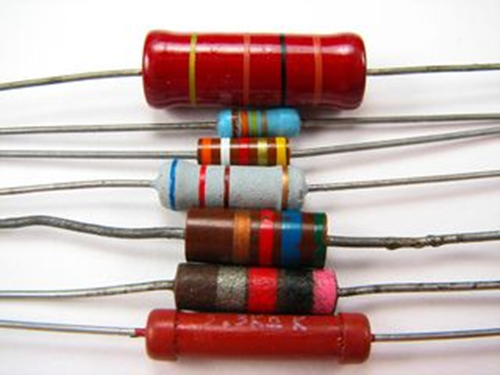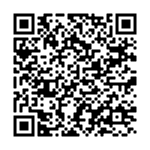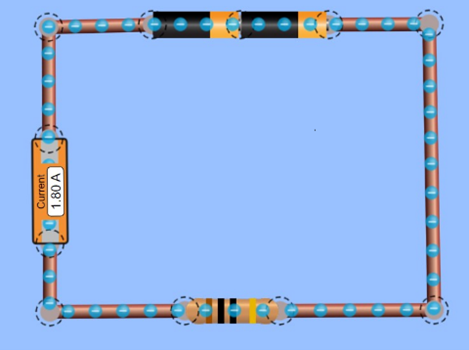Magnetism and electricity: Identify, describe and apply properties of electricity in an electric circuit
Unit 2: Resistance in an electric circuit
Leigh Kleynhans
Unit outcomes
By the end of this unit you will be able to:
- Describe resistance in an electric circuit.
- Describe how the following properties of a conducting material affect resistance:
- length
- cross-sectional area
- type of material.
- Determine the relationship between load (total resistance} and current, and describe the general principle.
What you should know
Before you start this unit, make sure you can:
- Apply the basic principles of electric circuits.
- Apply the concepts of electrical current, as covered in Subject outcome 4.3, Unit 1.
Introduction
Electrical devices convert the carried by the charges into other types of energy such as heat, sound, and motion. Components in the appliance resist the flow of charge and are referred to as . In this unit[1] you will understand what resistance is, the factors that affect the resistance and the relationship between resistance and current.
What is resistance?
is a measure of ‘how hard’ it is to ’push’ electricity through a circuit component or through an entire circuit (when it is referred to as the ). On a microscopic level, electrons moving through the conductor collide with the particles of which the conductor (metal) is made. The electrons then slow down. The energy that the electrons carry (referred to as electrical energy) is then transferred to the resistor. The transferred energy causes the resistor to heat up. You can feel this directly if you touch a cell phone charger when you are charging a cell phone – the charger gets warm because its circuits have some resistors in them.
The greater the resistance in a circuit the slower the charges will move, so the current will be less.
All conductors have some resistance. For example, a piece of copper wire has less resistance than a light bulb filament, but both have resistance.
A lightbulb contains a very thin wire surrounded by a glass housing. The high resistance of the small wire (filament) in a lightbulb causes the electrons to transfer a lot of their electrical energy in the form of heat. The heat energy is enough to cause the filament to glow white-hot which produces light.
The wires connecting the lamp to the cell or battery hardly get warm while conducting the same amount of current. This is because they are thicker (have a larger cross-section) and so have a lower resistance.
An important effect of a resistor is that it converts electrical energy into other forms of energy. All electrical devices contain resistors.


The unit in which electrical resistance is measured is the (Ω).
Factors that affect resistance
There are four factors that affect the flow of current and resistance.
| Factor influencing the flow of current in a conductor | How does it influence current flow in a conductor? | Explanation |
| Type of material | Current flow will differ according to the type of material used. | What the object is made of will have an effect on its resistance. Not all metals are equally good at conducting electricity. Metals are given a value which indicates their relative resistance. |
| Length | The longer the resistance wire, the lower the current. | A longer length will make it more difficult for current to flow, as there is more material to travel through. This increases the resistance. |
| Diameter/cross-sectional area | The thicker the wire, the greater the current. | The thicker the wire, the more charge can travel simultaneously through a given length of wire. Therefore, a larger cross-sectional area reduces the resistance. |
| Temperature | The higher the temperature, the lower the current. | When the temperature rises, the metal atoms also vibrate more making it difficult for the electric charges to flow due to more frequent collisions. This increases the resistance. |
Note
Watch this video about electrical resistance to consolidate the concept of resistance and the factors that affect resistance. You can scan the QR code or click on the link (Duration: 3.00).

Exercise 2.1
Use the table of resistivity values for different metals to answer the questions.
| Material | Resistivity (Ωm) |
| Silver | [latex]\scriptsize \text{1}\text{.59 x 1}{{\text{0}}^{{\text{-8}}}}[/latex] |
| Copper | [latex]\scriptsize \text{1}\text{.68 x 1}{{\text{0}}^{{\text{-8}}}}[/latex] |
| Gold | [latex]\scriptsize \text{2}\text{.44 x 1}{{\text{0}}^{{\text{-8}}}}[/latex] |
| Aluminium | [latex]\scriptsize \text{2}\text{.82 x 1}{{\text{0}}^{{\text{-8}}}}[/latex] |
| Iron | [latex]\scriptsize \text{1}\text{.0 x 1}{{\text{0}}^{{\text{-7}}}}[/latex] |
| Constantan | [latex]\scriptsize \text{4}\text{.9 x 1}{{\text{0}}^{{\text{-7}}}}[/latex] |
| Graphite | [latex]\scriptsize \text{2}\text{.5 x 1}{{\text{0}}^{{\text{-6}}}}[/latex] |
- Which metal in the table has the highest resistivity?
- Which metal in the table has the lowest resistivity?
- Suppose you had wires made from gold and iron, each with exactly the same dimensions. Which would have the highest resistance?
- How would the resistance and resistivity change if:
- the diameter was increased?
- the length was increased?
- the temperature was increased?
The full solutions are at the end of the unit.
The relationship between load and current
Do this activity to explore the relationship between load and current.
Activity 2.1: Determine the relationship between load (total resistance) and current
Time required: 10 minutes
What you need:
- internet access
What to do:
- Open this link for the PHeT virtual circuit construction lab.

- Click on ‘intro’
- Build a circuit with the components in the side boxes by dragging them into the centre space. You can lengthen the wires by dragging the dotted circles at each end, then join them to the dotted circles on the next component.
- Build a circuit with a battery of two cells, an ammeter, and one resistor, as illustrated in the screenshot below:

- Double click on the resistor so that it is highlighted in a yellow box. This will open a slider for you to change the resistance of the resistor.
- Note the resistance of the resistor (in Ohms) and the current reading on the ammeter.
- Move the slider to increase the resistance of the resistor and note what happens to the current reading on the ammeter.
- Observe how the rate at which the electrons move in the circuit changes as you adjust the resistance of the resistor.
What did you find?
As the resistance of the resistor increases, the current reading decreases. This can be confirmed by noting that the electrons move more slowly through the circuit when the resistance increases.
In the activity you saw that as the load (total resistance) increases in a circuit, it becomes more difficult for the charges to flow through the circuit. Because current is the rate at which charges move through a circuit, the current will consequently decrease.
Summary
In this unit you have learnt the following:
- Resistance is a measure of how hard it is for charges to flow through a conductor.
- A resistor is a component in a circuit with a higher resistance than the conducting wires so it converts electrical energy into other forms of energy.
- The resistance affects the current in a circuit; the higher the resistance the less the current.
- Resistance is measured in Ohms (Ω)
- Factors that affect the resistance of a resistor are:
- type of material: some metals have greater resistance than others (called their resistivity)
- length: the longer the resistor, the greater the resistance
- diameter: the thicker the resistor, the less the resistance
- temperature: the higher the temperature of the resistor, the greater the resistance.
Unit 2: Assessment
Suggested time to complete: 10 minutes
- Explain the meaning of resistance in an electrical circuit.
- 2. Give the unit in which resistance is measured in a word and a symbol.
- Give three examples of resistors in an electrical circuit and the energy conversion that takes place in them.
- List four factors that determine the resistance of a resistor.
- Describe what you would do to make a resistor with a very high resistance.
- You have a light bulb that will be damaged if the current through it is too high. You only have a battery that will produce a current that is too high for your light bulb. Suggest how this problem can be solved and include your reasoning.
The full solutions are at the end of the unit.
Unit 2: Solutions
Exercise 2.1
- Graphite (highest resistivity value on table)
- Silver (lowest resistivity value on the table)
- Iron (higher resistivity than gold)
- .
- resistance would decrease (greater diameter, lower resistance – easier for charges to move); resistivity remains the same (resistivity is a fixed value for the type of material)
- resistance would increase (greater length, greater resistance – charges have further to push through); resistivity remains the same
- resistance would increase (higher temperature, greater resistance – more difficult for charges to move through when metal atoms are vibrating faster); resistivity remains the same
Unit 2: Assessment
- Resistance is a material’s opposition to the flow of electric current, or how hard it is for the charges to move through the material.
- Ohms, Ω
- Any appropriate examples are acceptable here, e.g.
.
Light bulb – electrical energy to heat and light energy
Electric motor – electrical energy to kinetic energy
Fan – electrical energy to kinetic energy
Kettle – electrical energy to heat energy
Hairdryer – electrical energy to heat and kinetic energy - Type of material, length, diameter (or cross-sectional area), temperature.
- The resistor should be made of a material with high resistivity. It should be long and thin, as both these features increase resistance, and it should be kept as cool as possible.
- The light bulb can be connected to the battery as long as another resistor is placed in the circuit as well. This will increase the load (total resistance) and consequently decrease the current.
Media Attributions
- img01_Figure1 © Siyavula is licensed under a CC BY-NC-ND (Attribution NonCommercial NoDerivatives) license
- img02_Figure2 © DHET is licensed under a CC BY (Attribution) license
- QR_Code_PSL2SO43U1_1
- QR_Code_PSL2SO43U1_3
- img03_Activity2.1 © Phet Simulations is licensed under a CC BY (Attribution) license
- Parts of the text in this unit were sourced from Siyavula Physical Science Gr 10 Learner’s Book, Chapter 16, released under a CC-BY licence ↵
the energy carried by charges (electrons) in an electrical circuit
conductors that limits the flow of charge through a circuit
a material’s opposition to the flow of electric current
the weight being lifted by the simple machine
the unit in which resistance is measured
a value given to different metals which indicates their relative resistance
